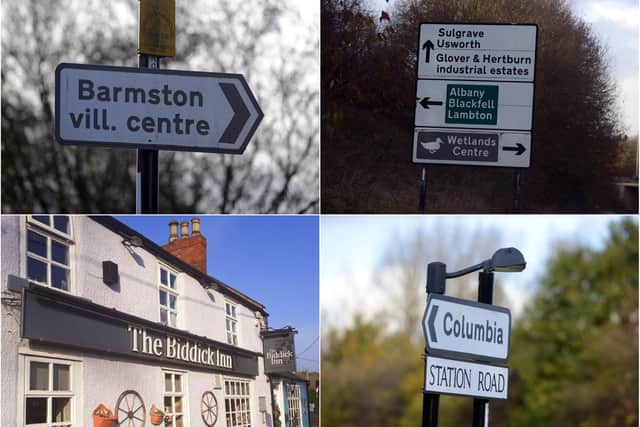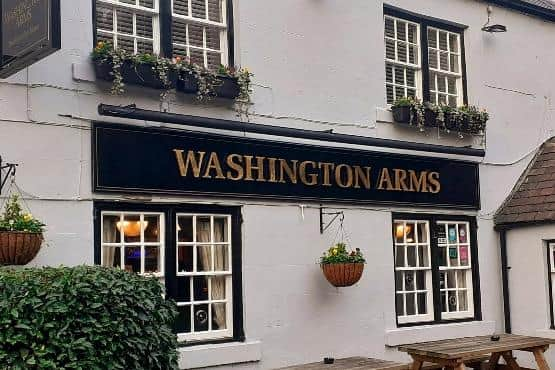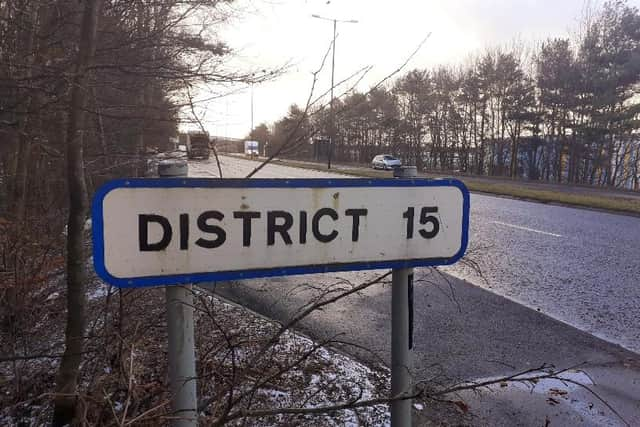The stories behind Washington's many place names - with areas called after Scotland and 'Mrs Uncle Sam'
and live on Freeview channel 276
We should start with the name of Washington itself which goes back to the 12th century and Sir William de Hertburn. William was a posh, wealthy lad. But like everyone in those days, not even he could afford a surname.
He came from Hartburn, near Stockton, and it was customary to take the name of your home village. For some reason he changed for a time to William de Hertbourne, before dropping the reference to the village altogether.
Advertisement
Hide AdAdvertisement
Hide AdSo he dropped “de Hertburn/Hertbourne” and became known as William “de Wessyngton” which was the name of the estate he acquired - now Washington. By the time he died he’d had as many handles as Puff Daddy. But Wessyngton stuck and eventually became Washington.


The place names have always been around. However, for a time district numbers were used to “assist” motorists.
However, even names as captivating as District 11, or the even more romantic District 15, failed to stir the souls of the poets and they had been phased out by 2006 (the numbers, not the poets).
The constituent parts of Washington have even more interesting names than District 15 did. Here, in alphabetical order and with thanks to David Simpson, is what we know.
Advertisement
Hide AdAdvertisement
Hide AdAlbany. We’ll start with an easy one. Washington has very well known connections to the USA and Albany is named after the state capital of New York. The name is ultimately derived from Alba, the Gaelic name for Scotland. The US city was named in honour of the Duke of Albany, later James II of England.


Ayton was named after one of the many coal mines in Washington. Beyond that we’ve drawn a bit of a blank. However, Ayton is also the name of a village near Berwick. In 1895 the barony of Ayton was sold to Henry Liddell-Grainger of Northumberland for £90,000.
There’s a possible link, but we’re prepared to be educated on this one.
Barmston is named after some farms which sat close to the north side of the River Wear. A millennium or so ago it belonged to a bloke called Beornmund. Hence “Beornmund’s ton” (“ton” is Anglo-Saxon for village), which morphed into Barmston.
Advertisement
Hide AdAdvertisement
Hide AdBiddick is mentioned in 1183 in the first survey of County Durham. Since then it’s had umpteen spellings before today’s version was settled upon; widespread literacy being relatively recent. Biddick is Anglo Saxon for “beside a dyke”, which seems logical as it lies on a river.


Hundreds of years ago North Biddick was called Bedyck Ulfkilli, meaning “Biddick belonging to Ulfkill”, whoever he was. Ulfkill is a Scandanavian name. This distinguished it from Biddick Waterville (South Biddick) across the Wear.
North Biddick Colliery, also known as Butney Pit, operated for over 200 years before closing in 1935.
The Lambton Worm lived on Worm Hill behind the Biddick Inn, from where he was barred.
Advertisement
Hide AdAdvertisement
Hide AdBlackfell: “Fell” from the Norse “fjall” means a range of hills or mountains. Black Fell is a hill lying beside what is now the Washington-Gateshead border. The fell was where miners held political rallies in the 19th century.
Chartershaugh is not a name we hear every day. But the A182 dual carriageway over the River Wear is Chartershaugh Bridge.
Chartershaugh, or Chatershaugh, was originally called Chaytor’s Haugh. The name evolved because people didn’t bother to say it properly. A “haugh” is flat riverside land, while Chaytor was the name of a prominent local family with mining interests.
Columbia is another name taken from the USA. Another Washington, occasionally in the news, is in the District of Columbia. Columbia is the female personification of America; a sort of Mrs Uncle Sam and named, in turn, after Christopher Columbus.
Advertisement
Hide AdAdvertisement
Hide AdConcord is yet another part of Washington named after a US city, in this case the capital of New Hampshire. The US city was thus named in 1765 in an effort to patch things up with a neighbouring town after an ugly border dispute.
Donwell: There are four British rivers called Don, one of which has its source near modern-day Donwell, ending in Jarrow as a tributary of the Tyne. A well, as you know, is a source of water.
Fatfield sounds like a straightforward sort of name with easily discoverable. However…
Named after a field that was somehow, er, fat? Perhaps it referred to the fecund coal fields of North Biddick Colliery.
Advertisement
Hide AdAdvertisement
Hide AdGlebe: A glebe is a piece of land beside a church where a priest would live. What is now Glebe was the site of yet another colliery between 1904 and 1972. The district became part of Washington New Town when it was established in 1964.
Harraton is also Anglo-Saxon in origin. “Here Ford Ton” means “settlement by the main road ford”. Harraton, rolls of the tongue a little easier. It was part of Chester-le-Street before it was subsumed by Washington in 1974.
Lambton is simply named after the Lambton family. John Lambton returned from the Crusades and slew the Lambton Worm. Straight up. Despite John and the worm having the same name, they were not related.
Oxclose is another place named after the colliery which opened in the 18th century, whose name is in turn is presumed to be agricultural in origin.
Advertisement
Hide AdAdvertisement
Hide AdPattinson Industrial Estate, formerly in the poetically entitled District 15, is named after Hugh Lee Pattinson, 1796-1858, an industrial chemist and inventor. He lived and was buried in Washington
Rickleton comes from “Ricling Dene”, Anglo-Saxon for “valley of the small stream”.
Sulgrave is named after a place of the same name in Northampton, which is another of George Washington’s ancestral homes.
Usworth is named after two medieval villages, Great and Little Usworth. Again the origin is Anglo-Saxon. The place name ending “worth” means a defined possession or estate. Both Usworths were once belonged to an Anglo-Saxon gentleman called Osa. “Osa-worth” leads to “Usworth”.